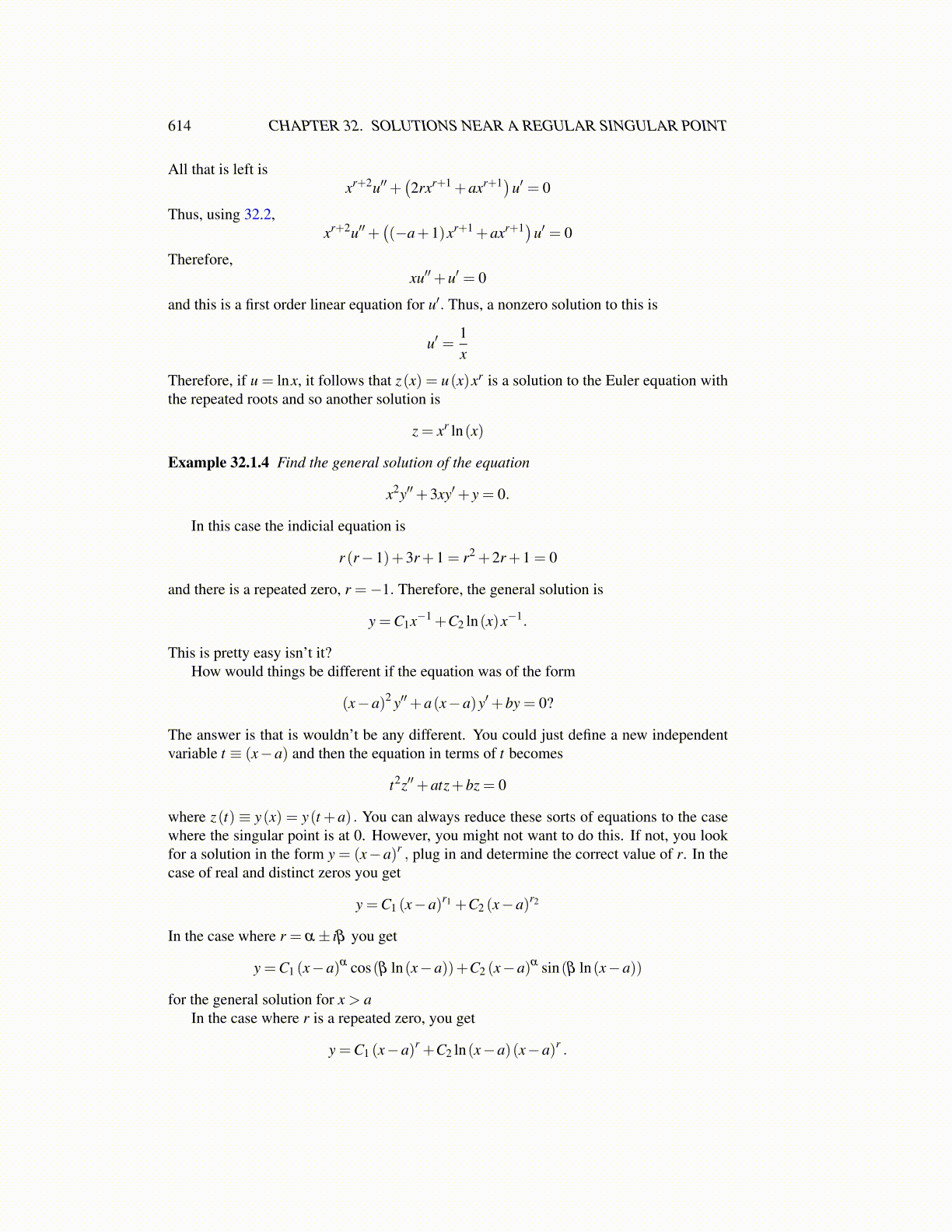
614 CHAPTER 32. SOLUTIONS NEAR A REGULAR SINGULAR POINT
All that is left isxr+2u′′+
(2rxr+1 +axr+1)u′ = 0
Thus, using 32.2,xr+2u′′+
((−a+1)xr+1 +axr+1)u′ = 0
Therefore,xu′′+u′ = 0
and this is a first order linear equation for u′. Thus, a nonzero solution to this is
u′ =1x
Therefore, if u = lnx, it follows that z(x) = u(x)xr is a solution to the Euler equation withthe repeated roots and so another solution is
z = xr ln(x)
Example 32.1.4 Find the general solution of the equation
x2y′′+3xy′+ y = 0.
In this case the indicial equation is
r (r−1)+3r+1 = r2 +2r+1 = 0
and there is a repeated zero, r =−1. Therefore, the general solution is
y =C1x−1 +C2 ln(x)x−1.
This is pretty easy isn’t it?How would things be different if the equation was of the form
(x−a)2 y′′+a(x−a)y′+by = 0?
The answer is that is wouldn’t be any different. You could just define a new independentvariable t ≡ (x−a) and then the equation in terms of t becomes
t2z′′+atz+bz = 0
where z(t) ≡ y(x) = y(t +a) . You can always reduce these sorts of equations to the casewhere the singular point is at 0. However, you might not want to do this. If not, you lookfor a solution in the form y = (x−a)r , plug in and determine the correct value of r. In thecase of real and distinct zeros you get
y =C1 (x−a)r1 +C2 (x−a)r2
In the case where r = α± iβ you get
y =C1 (x−a)α cos(β ln(x−a))+C2 (x−a)α sin(β ln(x−a))
for the general solution for x > aIn the case where r is a repeated zero, you get
y =C1 (x−a)r +C2 ln(x−a)(x−a)r .